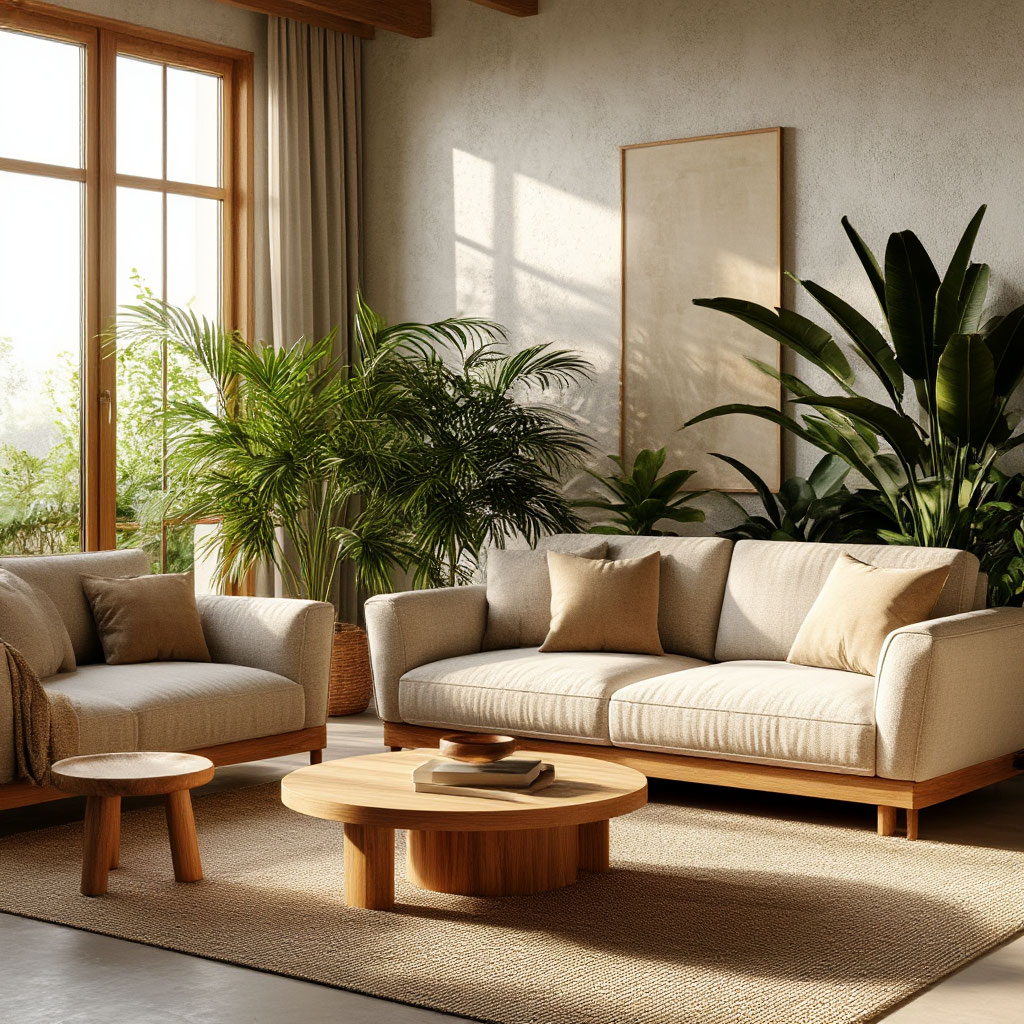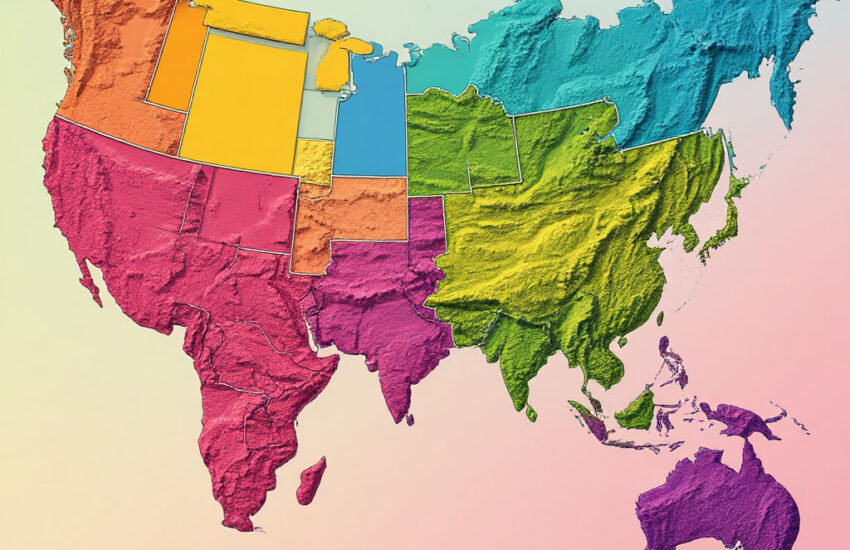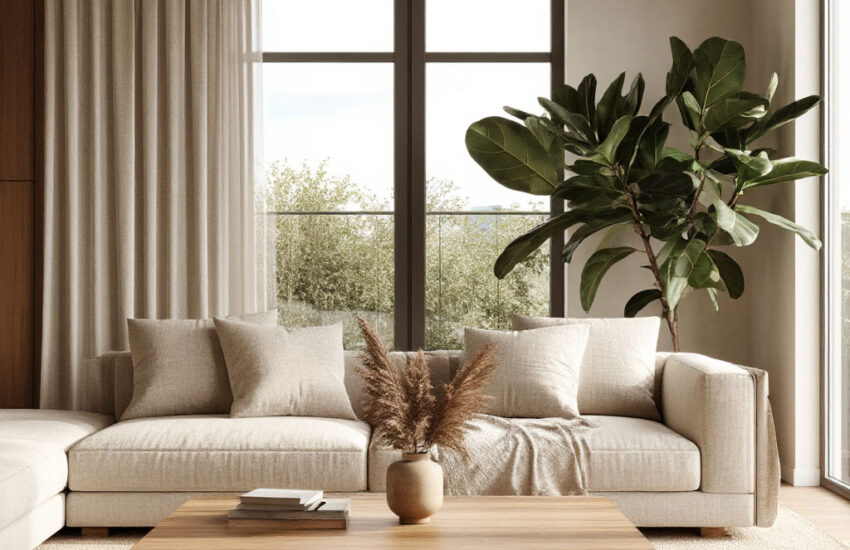How to Choose Sustainable Upholstery Fabrics for Your Home
Contents
- 1 Why Your Sofa Should Care About the Planet
- 2 The Best Fabrics for Your Eco-Friendly Sofa
- 2.1 Hemp: The Underrated Heavyweight
- 2.2 Linen: Breathable, Timeless, and (Mostly) Unobtrusive
- 2.3 Recycled Fabrics: Giving Waste a Second Life
- 2.4 Organic Cotton: A Classic Done Right
- 2.5 Tencel (Lyocell): Silky Smooth and Eco-Friendly
- 2.6 Wool: Nature’s Performance Fabric
- 2.7 Vintage and Deadstock: The Ultimate Eco Hack
- 3 Decoding the fine print: How to spot truly sustainable fabrics
- 4 Certifications that actually mean something
- 5 The Cool Kids of Sustainable Upholstery: The Brands That Are Doing It Right
- 6 Wrapping It Up: Your Home, Only Greener
- 7 FAQ
- 7.0.1 Do I still need a flame-retardant label on a non-toxic sofa in California?
- 7.0.2 Are PFAS stain-proof coatings on sustainable upholstery fabrics safe for kids and pets?
- 7.0.3 How much does organic or recycled upholstery fabric actually cost per yard in the U.S.?
- 7.0.4 Will eco-friendly upholstery hold up to cat scratches and dog claws?
- 7.0.5 Can I steam-clean sustainable upholstery or will I ruin it?
Choosing the right upholstery fabric is no longer just about looks or comfort. If you’re into eco-friendly upholstery, you know it’s also about making choices that don’t destroy the planet. Good news! Eco-friendly fabric options have come a long way, and there are now plenty of stylish, durable, and non-toxic fabrics that won’t leave you feeling guilty.
Whether you’re reupholstering a sofa, choosing new curtains, or simply browsing through home textiles for an update, going green doesn’t mean sacrificing style. From organic fabric options like hemp and linen to American textile brands leading the way in eco-friendly home decor, now is the time to make your space as kind to the Earth as it is to you. Here’s how to choose upholstery that’s easy on the eyes and the environment. At the end of this article, you’ll be able to download a checklist — a quick guide to choosing upholstery fabrics that are stylish, durable, and sustainable.
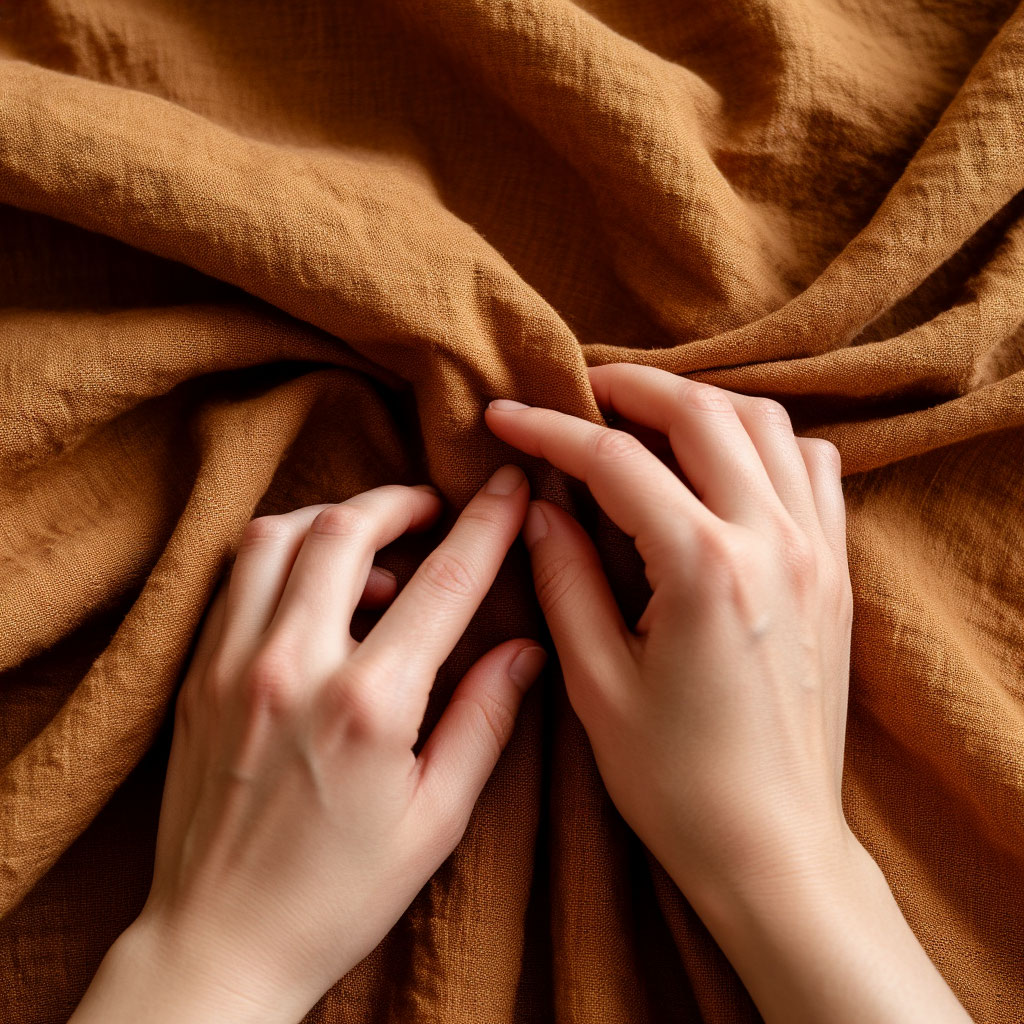
Why Your Sofa Should Care About the Planet
We spend a lot of time on our sofas — lounging, watching Netflix, maybe working. But how often do we stop to think about what they’re made of? If you’re going for eco-friendly upholstery, you’re not just choosing a fabric, you’re voting for:
- cleaner air;
- fewer chemicals;
- a healthier home.
Regular upholstery and textiles often hide nasty stuff — synthetic dyes, formaldehyde, and plastics that off-gas over time. Switching to eco-friendly fabric isn’t just a trend. It’s a way to make sure your cozy nook isn’t secretly toxic.
The Hidden Cost of Cheap Fabric
Step into any big-box furniture store and you’ll see sofas wrapped in cheap fabrics that look great — until you check the label. Polyester, acrylic, and vinyl may be wallet-friendly, but they’re petroleum-based, non-biodegradable, and often treated with flame retardants that linger in your dust. Some “natural” materials, like regular cotton, absorb water and pesticides unless they’re certified organic. American textile brands are stepping up their game with non-toxic fabrics that eschew questionable chemicals without skimping on durability.
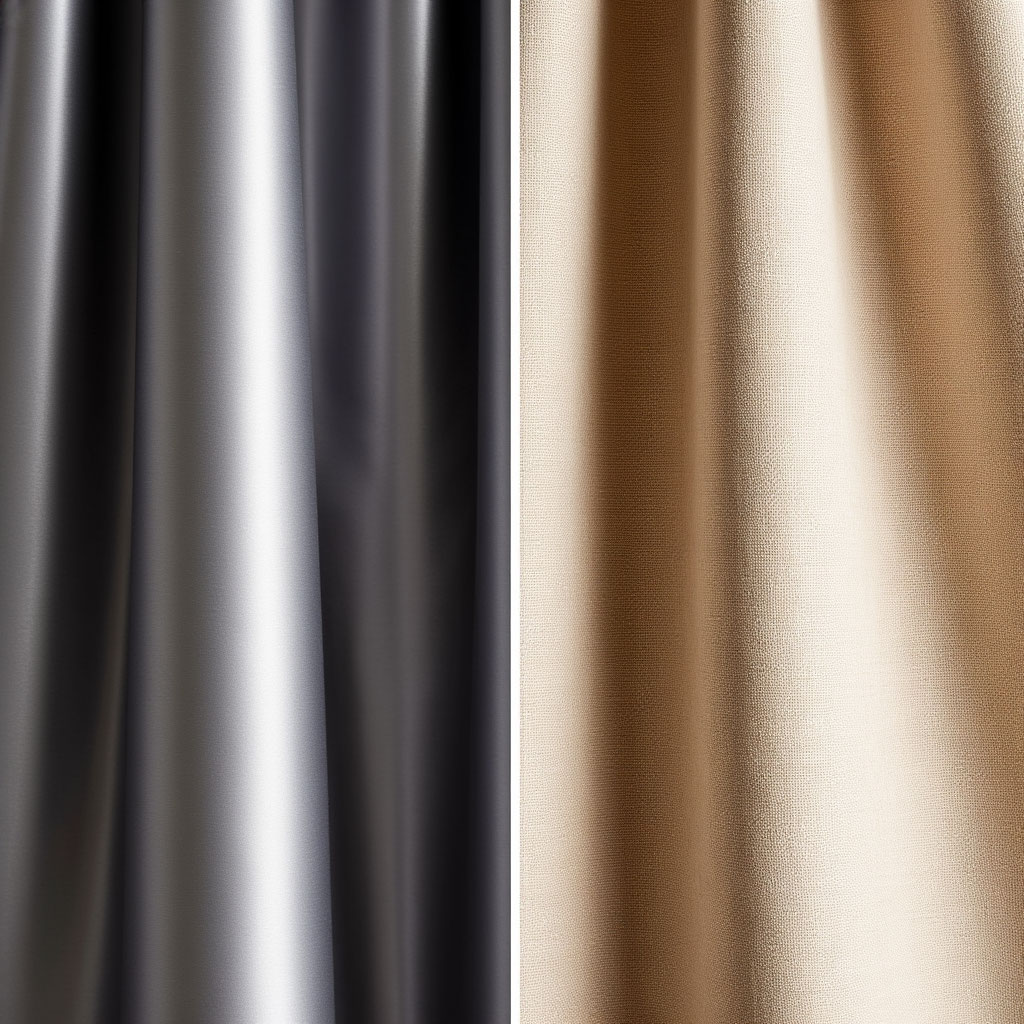
What Makes Upholstery Truly Green?
Not all eco-friendly home decor is created equal. Fabric may be marketed as “green” because it’s recycled, but if it’s mixed with plastic or dyed with heavy metals, it’s not doing the planet (or you) any favors. Truly eco-friendly fabric considers its entire life cycle: how it’s grown, processed, dyed, and what happens when it’s thrown away. Organic fabric options like hemp or linen score points for being biodegradable, while recycled materials keep waste out of landfills.
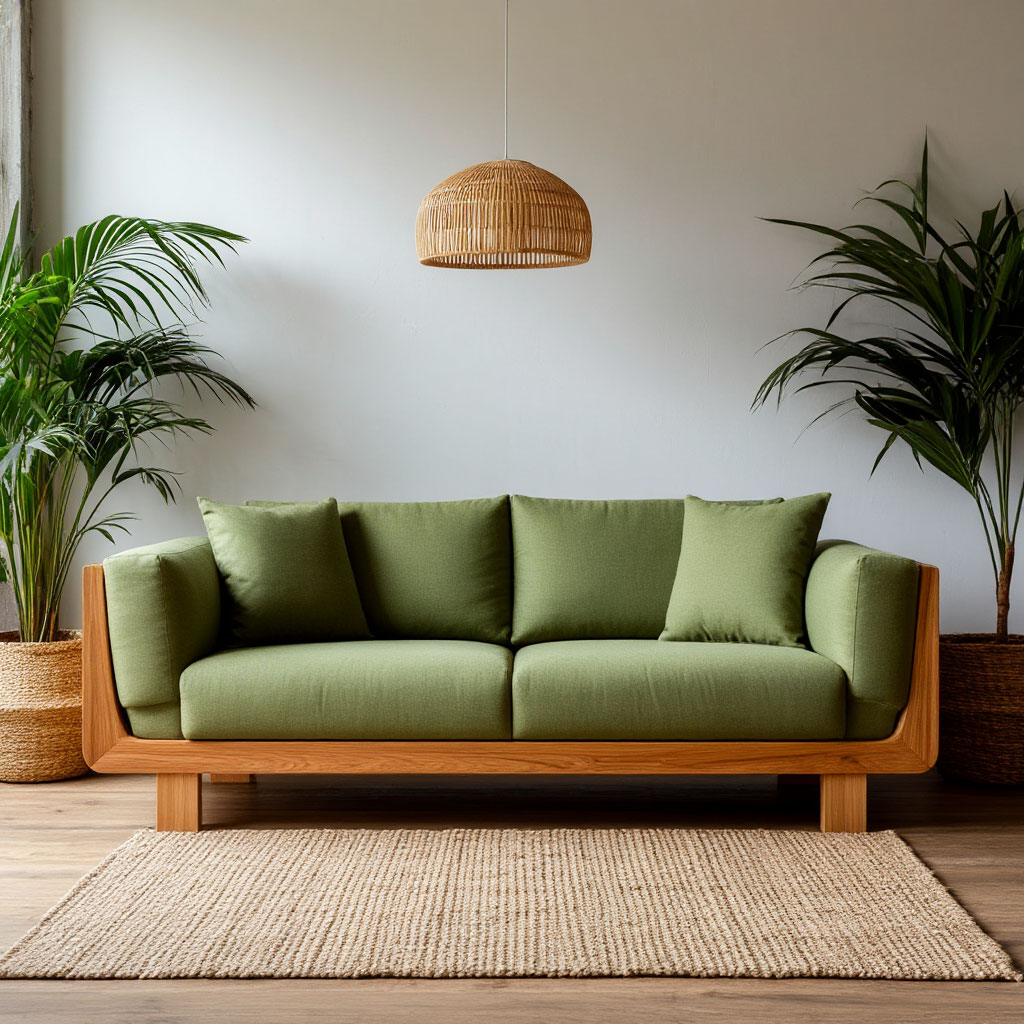
Healthy Home, Happier You
Have you ever noticed how funny new furniture smells? These are volatile organic compounds (VOCs) that emit gases, and they’re not great for your lungs. Eco-friendly upholstery is free of synthetic adhesives and chemical coatings, meaning fresher air and fewer headaches — literally. For families with kids or pets, non-toxic textiles are an obvious choice. No one wants their little one chewing on a pillow laced with flame retardants. Natural fibers like wool or organic cotton breathe better, reducing that sticky, sweaty feeling in the summer.
The Durability Factor
Fast furniture is the fast fashion of home decor — cheap, disposable, and terrible for the planet. The opposite? Invest in home textiles that will last. A quality sofa with eco-friendly fabric may cost more up front, but it won’t wear out, fade, or flatten out after a year. Materials like hemp and linen actually get softer over time, while high-quality recycled fabrics resist pilling. Translation: fewer replacements, less waste, and more savings over time.
Where Style Meets Sustainability
Gone are the days when “eco-friendly” meant scratchy burlap or beige mush. Today’s eco-friendly home decor includes:
- lush velvets made from recycled bottles;
- smooth fabrics made from plant-based pulp;
- vintage fabrics from regenerative farms.
American textile brands like Coyuchi, Inside Weather, and Loloey prove that you don’t have to choose between aesthetics and ethics. Whether you prefer minimalist neutrals or bold prints, there’s a sustainable fabric to suit your mood.
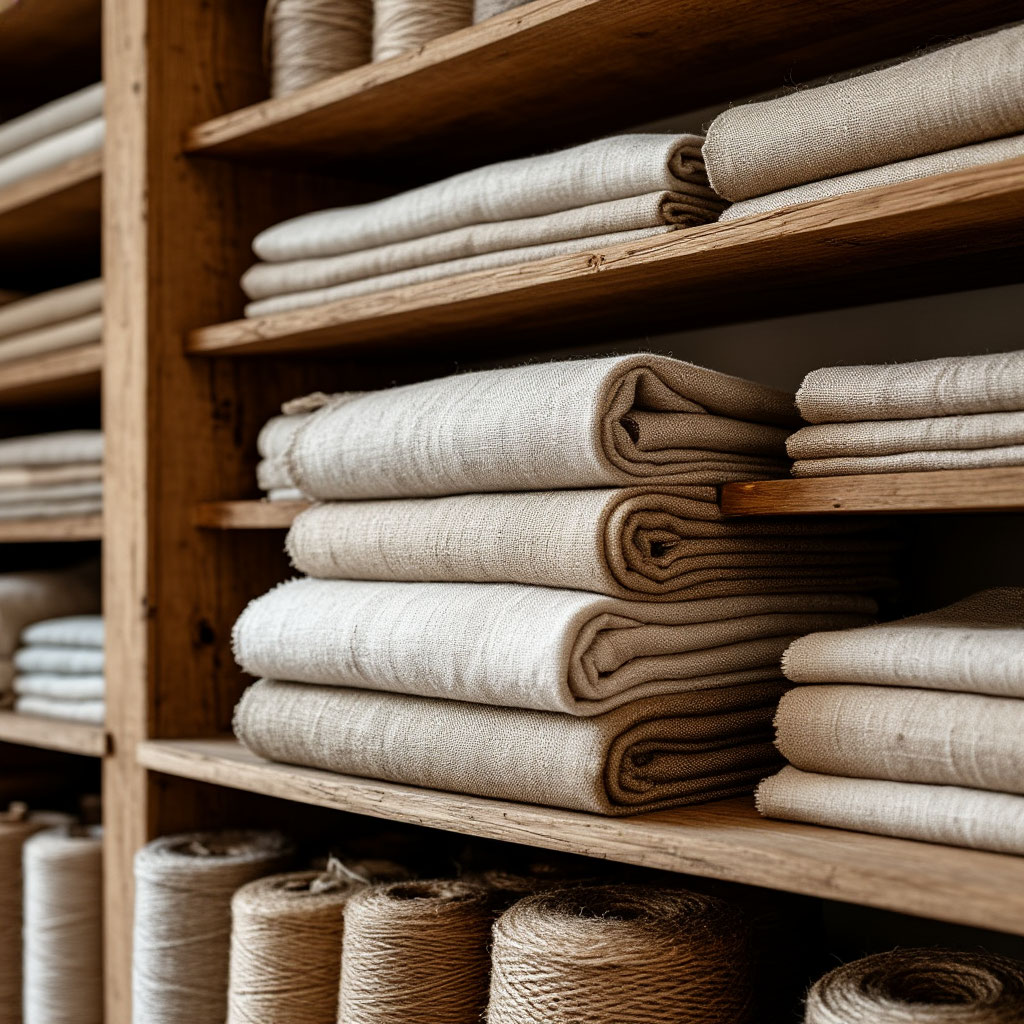
The Best Fabrics for Your Eco-Friendly Sofa
Choosing eco-friendly upholstery isn’t just about avoiding bad materials, it’s about choosing materials that actually make a difference. From super-durable hemp to butter-soft recycled fabrics, today’s eco-friendly fabrics prove you don’t have to sacrifice comfort for your conscience.
Hemp: The Underrated Heavyweight
Hemp is overshadowed by cotton, but is secretly the MVP of organic fabrics. It grows like a weed (literally), requiring minimal water and zero pesticides, yet yields one of the strongest natural fibers. Unlike cotton, which wears out after years of use, hemp upholstery gets softer over time while resisting pilling and sun damage. Brands like Rawganique and Hemp Tailor are turning it into sleek, modern textiles that rival linen in texture, but without the environmental guilt.
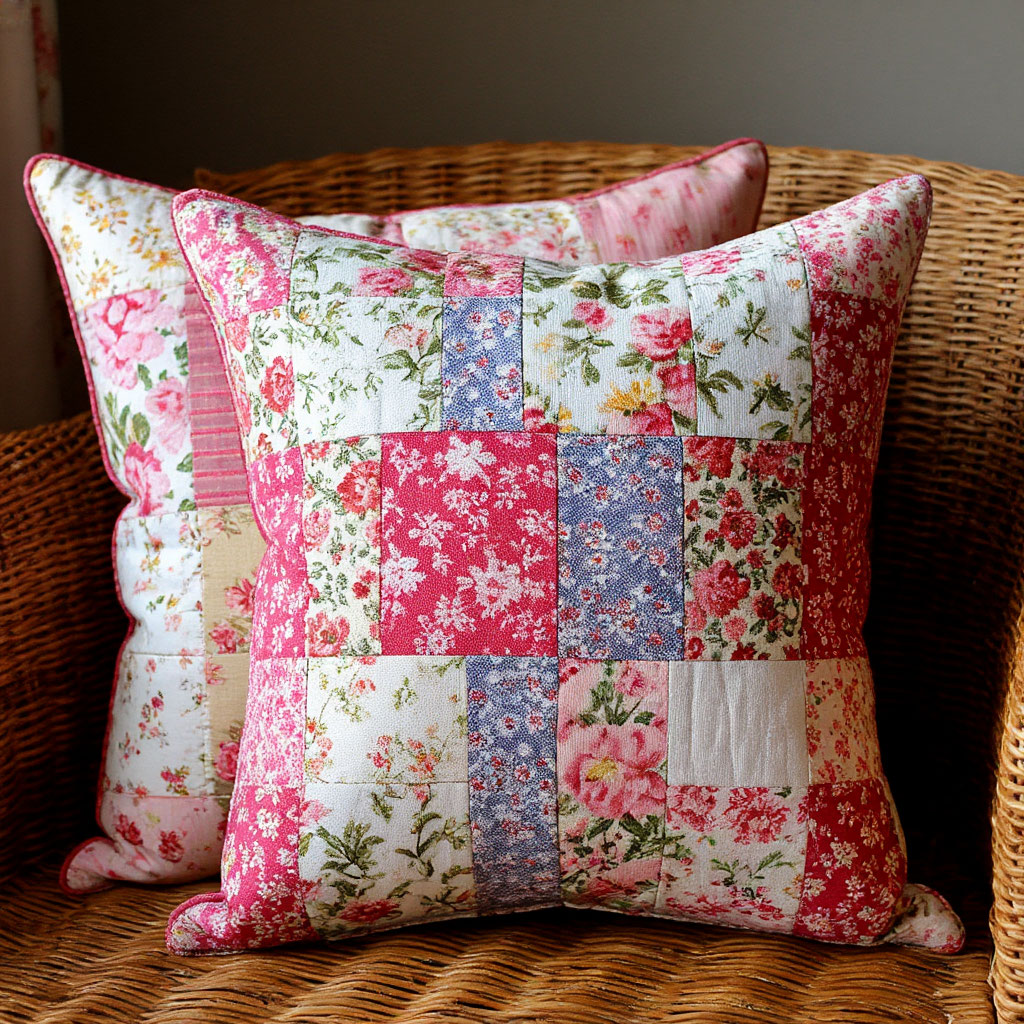
Linen: Breathable, Timeless, and (Mostly) Unobtrusive
That effortlessly rumpled, lived-in look isn’t just chic — it’s eco-friendly. Flax plants (the source of flax) thrive in poor soil with little watering, and the resulting fabric is:
- biodegradable;
- moisture-wicking;
- naturally moth-resistant.
The catch? Not all linen is created equal. Look for European or American textile brands like Libeco or Cultiver that prioritize ethical farming and Oeko-Tex®-certified dyes. Avoid blends with synthetic fibers if you want a fully compostable home textile.
Recycled Fabrics: Giving Waste a Second Life
That velvety sectional you love? It could be made from old plastic bottles. Brands like Revolution Performance Fabrics are turning post-consumer waste into luxurious, durable fabrics that can withstand pets and kids alike. Even high-end designers are getting in on the action—eco-friendly upholstery isn’t just about crisp aesthetics anymore. In terms of performance, these fabrics often outperform pure synthetics, with better stain resistance and color retention. Just check the backing—some use chemical adhesives that undermine their eco credentials.
Organic Cotton: A Classic Done Right
Regular cotton is a pesticide-laden watering hole, but its organic counterpart eliminates all the nasty stuff while maintaining its familiar softness. Brands like Coyuchi and Boll & Branch use GOTS-certified cotton for sofas, meaning there are no toxic dyes or unfair labor practices. It’s not as durable as hemp, so save it for low-traffic pieces like accent chairs. Pro tip: Look for tight weaves or hemp blends for extra durability in non-toxic fabrics.
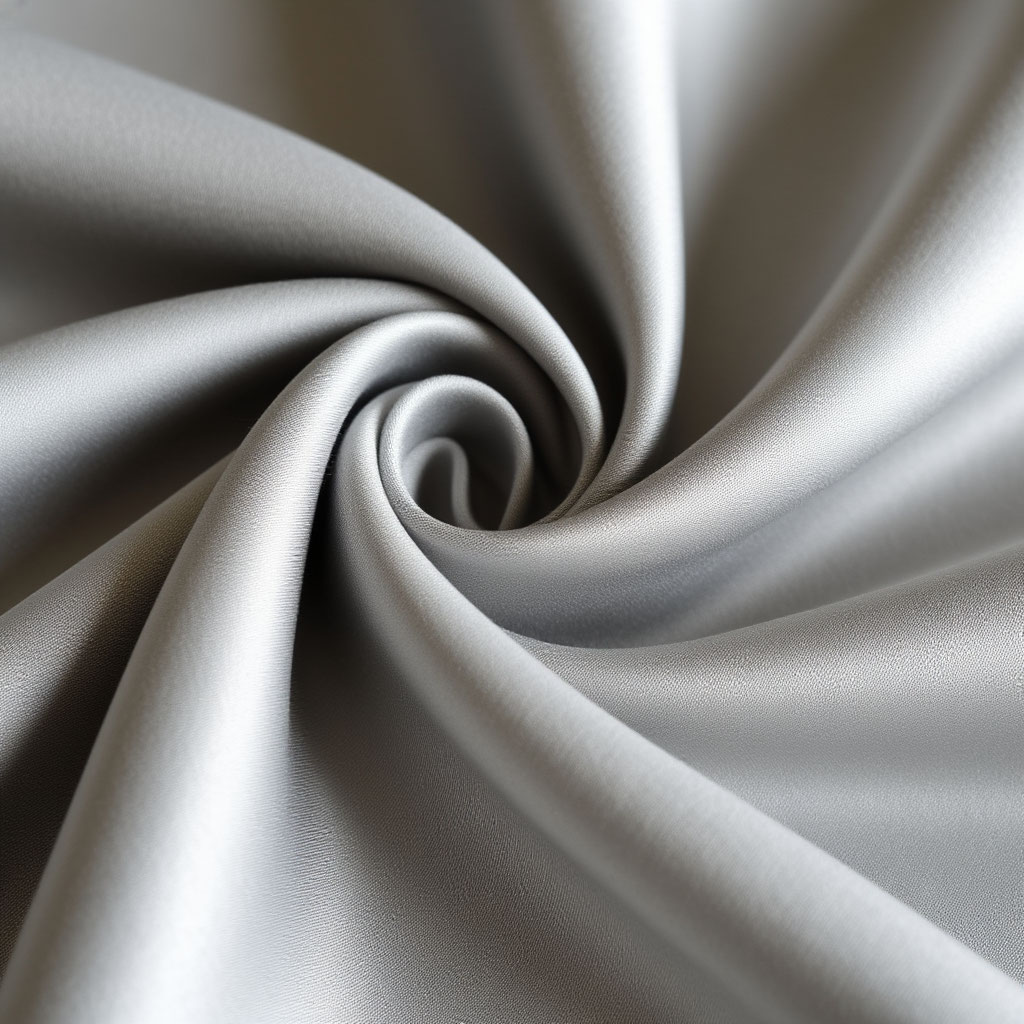
Tencel (Lyocell): Silky Smooth and Eco-Friendly
Made from sustainably sourced eucalyptus cellulose, Tencel feels like a cross between linen and silk — cool to the touch and wrinkle-resistant. The closed-loop manufacturing process recycles 99% of solvents, making it a favorite among eco-friendly home decor. Austrian brand Lenzing (the inventor) collaborates with American textile brands like Etsy sellers to create upholstery-grade options. It’s pricey, but ideal for allergy sufferers because it naturally resists dust mites and bacteria.
Wool: Nature’s Performance Fabric
When sourced correctly, wool is renewable, biodegradable, and downright magical. It’s moisture-wicking, odor-resistant, and even self-extinguishing—no chemical treatments required. Look for certifications like the Responsible Wool Standard (RWS) to ensure humane shearing and land management. Brands like The Citizenry work directly with ranchers to create eco-friendly fabric that’s as ethical as it is plush. Avoid cheap acrylic blends, which negate the natural benefits of wool.
Vintage and Deadstock: The Ultimate Eco Hack
Second-hand fabrics aren’t just for thrift stores. Designers like Studio Variously are rescuing deadstock (the leftovers from high-quality textiles) for unique, eco-friendly upholstery. No new inventory, zero shipping wait times, and you get a unique look. The downside? Limited supply, so you’ll need to act fast. Facebook Marketplace and Etsy are gold mines for vintage rolls of quality fabric if you’re willing to hunt.
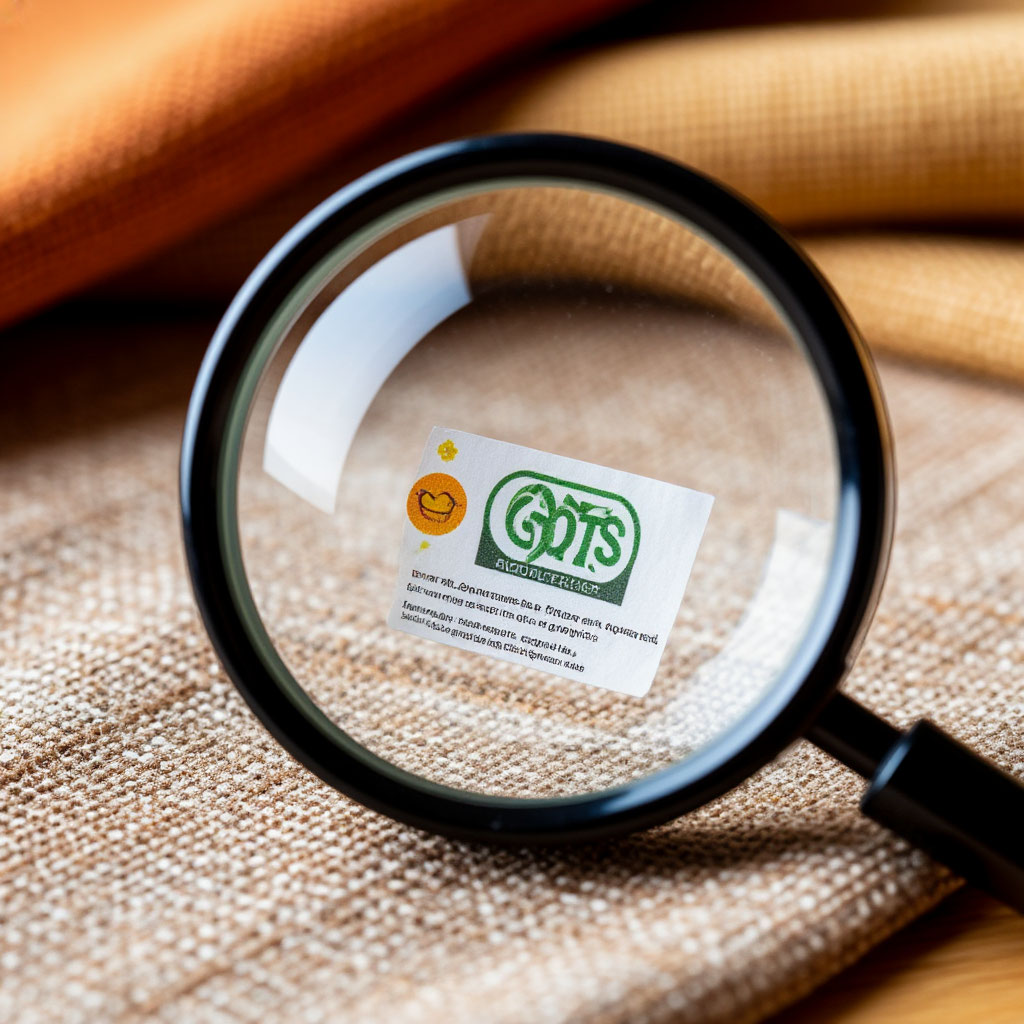
Decoding the fine print: How to spot truly sustainable fabrics
You’ve fallen in love with what looks like the perfect eco-friendly upholstery, but how do you know it’s not just greenwashing? Between the vague marketing terms and clever labels, shopping for sustainable fabric can feel like navigating a minefield. Here’s how to spot the real eco-friendly fabrics from the fakes.
Certifications that actually mean something
That “natural” label on a roll of fabric? Basically meaningless. You want third-party verification that proves the textiles meet strict environmental and ethical standards. GOTS (Global Organic Textile Standard) is the gold standard for organic fabrics, covering everything from pesticide-free farming to fair labor practices. OEKO-TEX® certification ensures your non-toxic textiles are free of harmful chemicals, which is important for families with toddlers crawling on the furniture. For recycled material, look for GRS (Global Recycled Standard) certification, which tracks the entire supply chain.
Fiber Content Breakdown
Flip a fabric swatch over and study the tag like a nutrition label. A textile that claims to be an eco-friendly home decor item but lists “50% polyester” as the first ingredient? Red flag. It should be made up of predominantly natural fibers:
- hemp,
- organic cotton,
- linen,
- wool.
If you see recycled synthetics (like REPREVE® polyester), check the percentage — the higher the better. Be wary of vague terms like “plant-based” without specifics; some fabrics contain only a fraction of renewable content mixed with plastic.
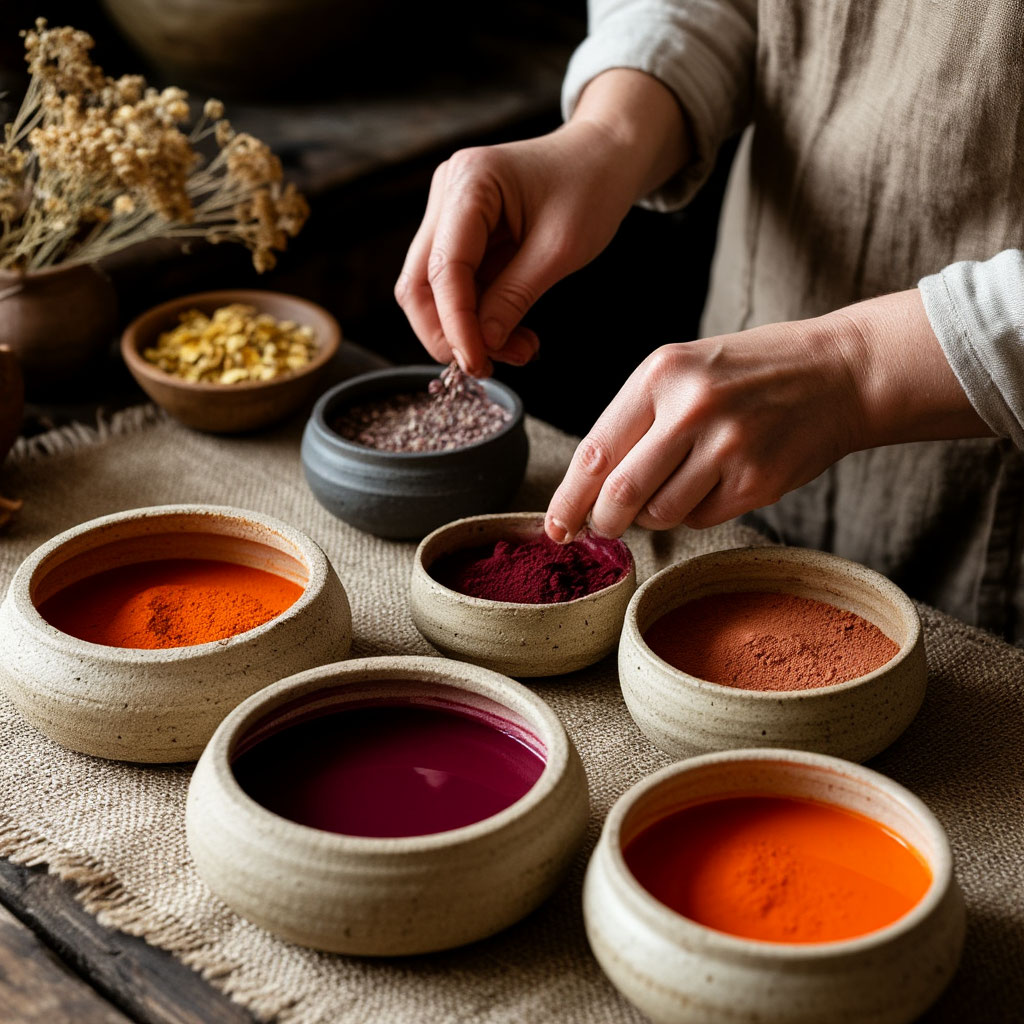
Dye Work: The Hidden Environmental Culprit
That vibrant emerald green or rich indigo may look stunning, but traditional dyeing processes are among the textile industry’s biggest polluters. Water-intensive and loaded with heavy metals, they make rivers toxic in manufacturing hubs. Look for fabrics that are:
- dyed with low-impact dyes (which use less water and fixatives);
- natural plant-based pigments.
Some American textile brands, like Nature’s Fabrics and Harmony Art, specialize in undyed, earthy tones that allow the pristine beauty of sustainable fabric to shine through.
Backings and Finishes: Where Sustainability Often Fails
The fabric may be GOTS-certified organic cotton… and then tainted with a polyurethane backing or a PFAS stain-resistant coating. Always ask what’s on the back and whether any chemical treatments have been applied. For truly non-toxic fabrics, look for backings made from natural rubber or fabrics that have no finishing at all. Performance attributes like water resistance can often be achieved through tight weaves or the properties of the inner fibers (hello, wool!) rather than synthetic sprays.
The Mileage Question: Where and How It’s Made
“Sustainable” fabric shipped from overseas can negate its benefits in high-carbon shipping. Prioritize American textile brands or regional producers to reduce freight emissions. You’ll often get clearer information about labor conditions. Domestic production isn’t always feasible (hemp processing, for example, still largely happens overseas), but local craftsmanship can offset some of the impact. Some brands, like Alabama Chanin, even champion hyperlocal “farm-to-couch” production models.

Durability vs. Biodegradability: Balancing Act
Some eco-friendly upholstery materials are durable (recycled synthetics) but won’t biodegrade in landfills. Others (like untreated linen) compost beautifully but may wear out faster. Your choice depends on your priorities:
- If you redecorate often, skip the biodegradables.
- For pieces that can be passed down, choose durable natural fibers with minimal blends.
Pro tip: Tight weaves and darker colors hide stains and wear better, extending the life of any fabric—a top sustainability tip.
The Price Paradox
Yes, organic fabric options often cost more than conventional textiles. But consider the longevity: A cheap polyester sofa might last five years before it starts pilling or fading, while a hemp-wool blend can look great for decades. Some brands, like Medley, offer financing, and hunting for deadstock fabrics can net you luxury materials for half the price. Think of it as cost per use—those pennies per seat are starting to look pretty expensive.

The Cool Kids of Sustainable Upholstery: The Brands That Are Doing It Right
You’ve got all the information on materials and how to spot the real deal — now let’s talk about the American textile brands that are actually living it up. These companies aren’t just slapping “green” on their labels; they’re reimagining what eco-friendly home decor looks like, from the farm to the fabric to your living room.
The Trailblazers: Heritage Brands with a Modern Twist
Some names have been in the game longer than sustainability has been a trend. Take Coyuchi — their organic cotton upholstery fabrics are GOTS-certified and woven in family-run mills. And then there’s Libeco, the Belgian linen giant (with a strong presence in the U.S.) that’s been perfecting flax farming since 1858. These veterans are proving that eco-friendly upholstery doesn’t have to mean sacrificing traditional craftsmanship.
But it’s not just the old-school players. California-based brand Inside Weather lets you customize sofas using recycled polyester and water-based adhesives, proving that modular furniture can be kind to the planet, too. Their “zero inventory” model reduces waste by making custom pieces—no overproduction, no landfill fodder.
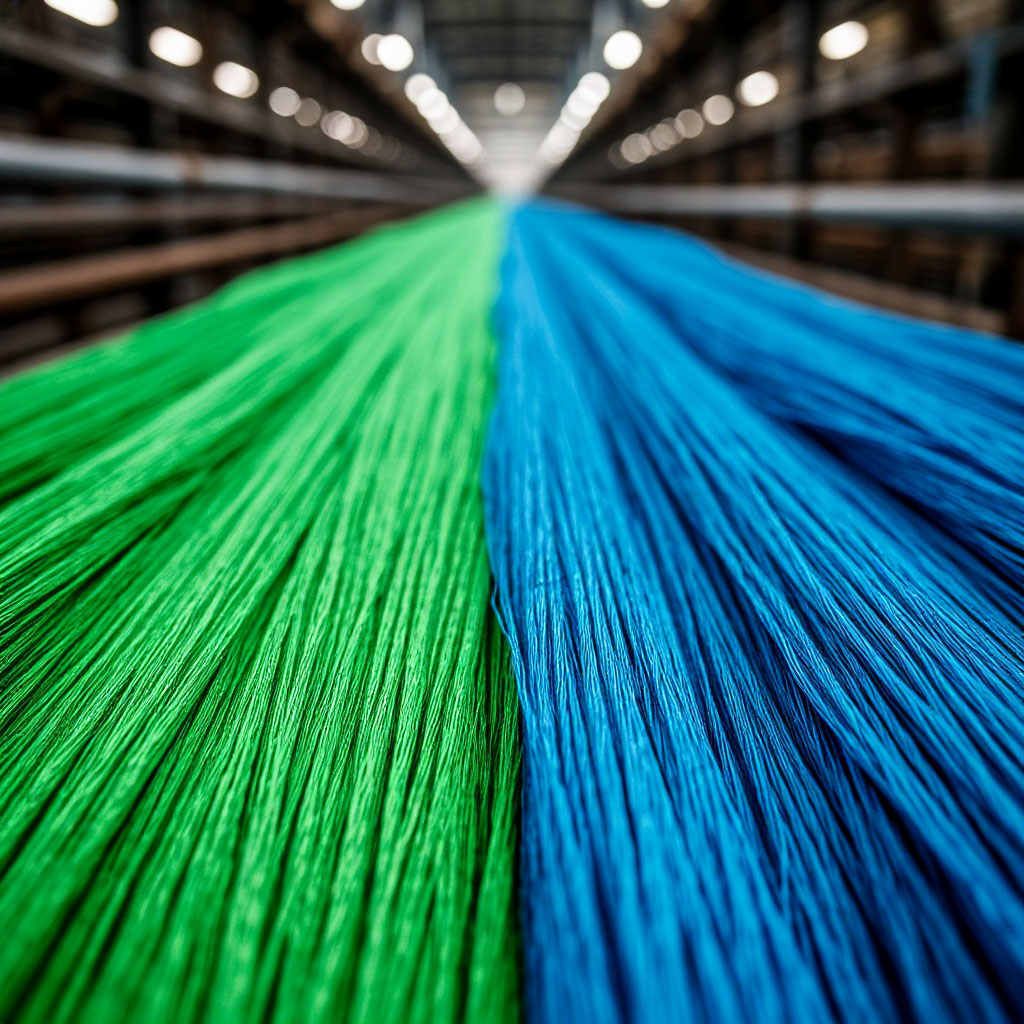
Innovators: Turning Waste into Wow
Why mine new materials when we have plenty? Revolution Performance Fabrics turns discarded plastic bottles into buttery-soft fabrics that rival pure synthetics. Their trick? These non-toxic fabrics are GREENGUARD Gold certified, meaning they won’t release harmful gases into your air.
For something even more unexpected, check out Moorbi. The brand makes velvety upholstery from seaweed fibers, a renewable resource that requires no farmland or pesticides. It’s wild (literally), but the result is a luxurious, compostable fabric that’s gentle on sensitive skin.
Small Batch Heroes
Not every sustainable fabric success story comes from a big name. Loloey, a woman-owned brand, collaborates with artisans in India to create handwoven blends of organic cotton and hemp. Each piece supports fair wages and traditional methods—a far cry from mass-produced home textiles. Similarly, Alabama Chanin champions slow fashion in furniture, using locally sourced organic cotton and natural dyes in its limited-edition collections.
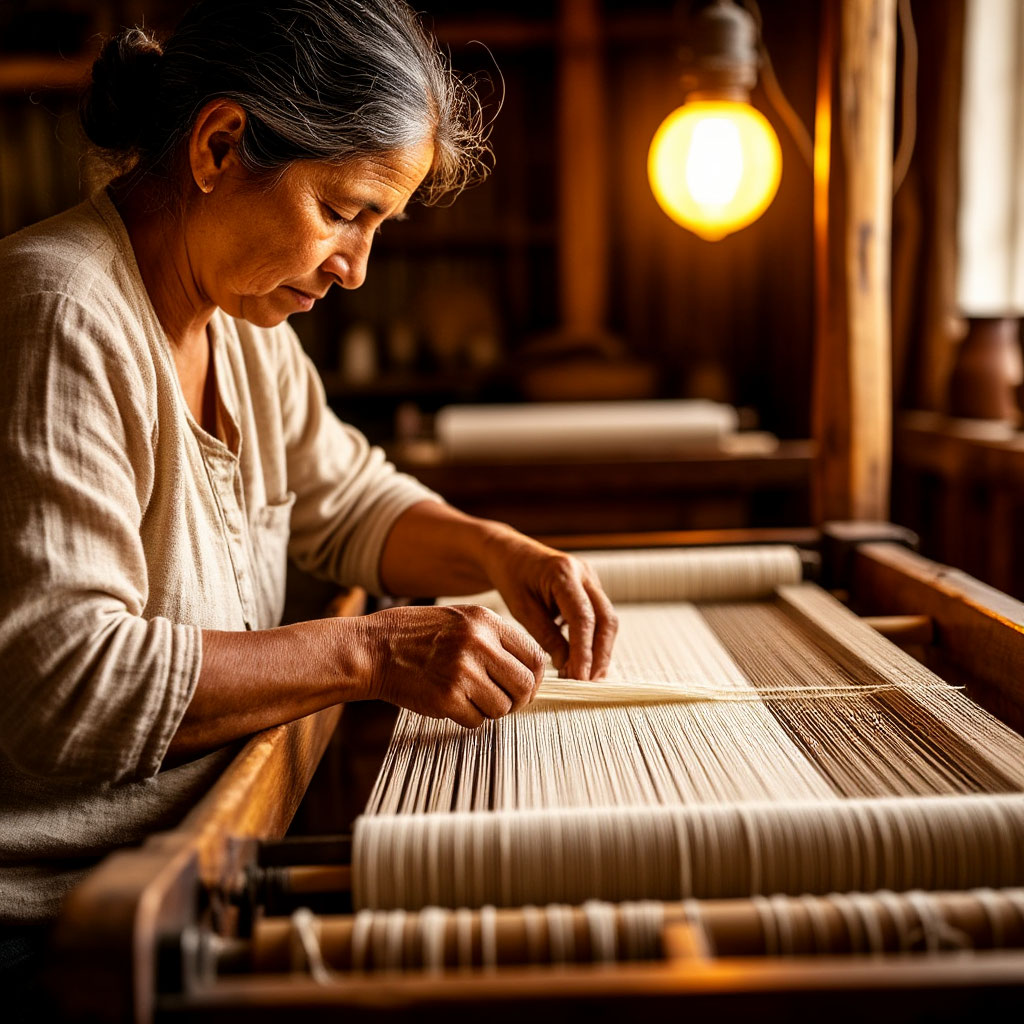
Transparency Stars
Have you ever wanted to trace the origins of your sofa, like your food from farm to table? Medley makes it possible. This California-based company details every component of its sofas, from the FSC-certified hardwood frames to the organic wool batting. They list their factories and certifications up front—no research required.
Avocado Green Mattress (yes, they also make upholstery) takes it a step further with “negative” certifications—meaning they test to prove they’re free of thousands of harmful chemicals. Their plant-based, vegan fabrics are a dream for allergy sufferers.
Budget Innovators
Think sustainable upholstery is just for the 1%? Burrow is busting that myth with mid-priced modular sofas made with recycled fabrics. Their secret? Cutting out the middleman and using innovative materials like REPREVE® recycled polyester.
For a vintage vibe without the hunt, Vermont Woods Studios offers heirloom-quality pieces upholstered in Forest Stewardship Council (FSC)-certified fabrics. Their prices are higher than IKEA, but their “buy once, keep forever” approach saves money (and the planet) in the long run.
Future Thinkers
Where is eco-friendly home decor headed next? Brands like Pangaia (better known for its clothing) are experimenting with algae-dyed fabrics and grape leather upholstery. Meanwhile, ECONYL® is collaborating with designers to transform ocean waste into expressive furniture textiles. From traditional bedding to space-age algae, you have options that align with your values without forcing you to live in a hemp bag.
Wrapping It Up: Your Home, Only Greener
Shopping for eco-friendly upholstery used to mean choosing between “crunchy” and “ugly.” Not anymore. Today’s sustainable fabric options prove you can have that Instagram-worthy sofa and a cleaner conscience. From hemp that softens with age to recycled fabrics that outperform their virgin counterparts, the materials are better than ever. And with American textile brands leading the charge in transparency and innovation, you’re not just buying furniture—you’re supporting a movement.
The best part? Going green doesn’t require a total lifestyle overhaul. Start small: Swap one conventional piece for non-toxic textiles, hunt for deadstock fabrics for your next reupholstery project, or simply ask more questions before you buy. Every choice nudges the industry toward cleaner practices.
FAQ
Do I still need a flame-retardant label on a non-toxic sofa in California?
Yes, but it shouldn’t mean added chemicals. Look for the TB117-2013 label with the disclosure that states whether flame retardants were added; choose “NO added flame retardant chemicals.”
Are PFAS stain-proof coatings on sustainable upholstery fabrics safe for kids and pets?
No—avoid fluorinated repellents. Pick PFAS-free finishes, tight weaves, or naturally resilient fibers like wool, and rely on prompt spot-cleaning instead of permanent coatings.
How much does organic or recycled upholstery fabric actually cost per yard in the U.S.?
Expect roughly $30–$120/yd: organic cotton/linen from about $30–$60, recycled velvets $40–$90, premium wool/hemp/Tencel often $60–$120. Designer lines can run higher.
Will eco-friendly upholstery hold up to cat scratches and dog claws?
Yes, if you choose right. Go for tight twills, textured weaves, or felted wool; avoid loose weaves and chenilles. Add washable slipcovers and keep nails trimmed for longer life. (General guidance; apply to your fabric swatch.)
Can I steam-clean sustainable upholstery or will I ruin it?
Yes, but only when the care code allows. Check the tag: W or WS can take cautious moisture; S or X should avoid water/steam. Test hidden areas and keep heat low.
We present a clear and practical video on choosing eco-friendly upholstery fabrics and a non-toxic sofa, which examines the trade-offs in fabric selection, their durability, and key health considerations.
So whether you’re all-in on eco-conscious home decor or just dipping a toe in, remember: A sustainable home isn’t about perfection. It’s about progress—one comfy, stylish, planet-friendly seat at a time.
You can now download a sustainable upholstery checklist — a practical tool to help you select fabrics that are eco-friendly, comfortable, and built to last.
